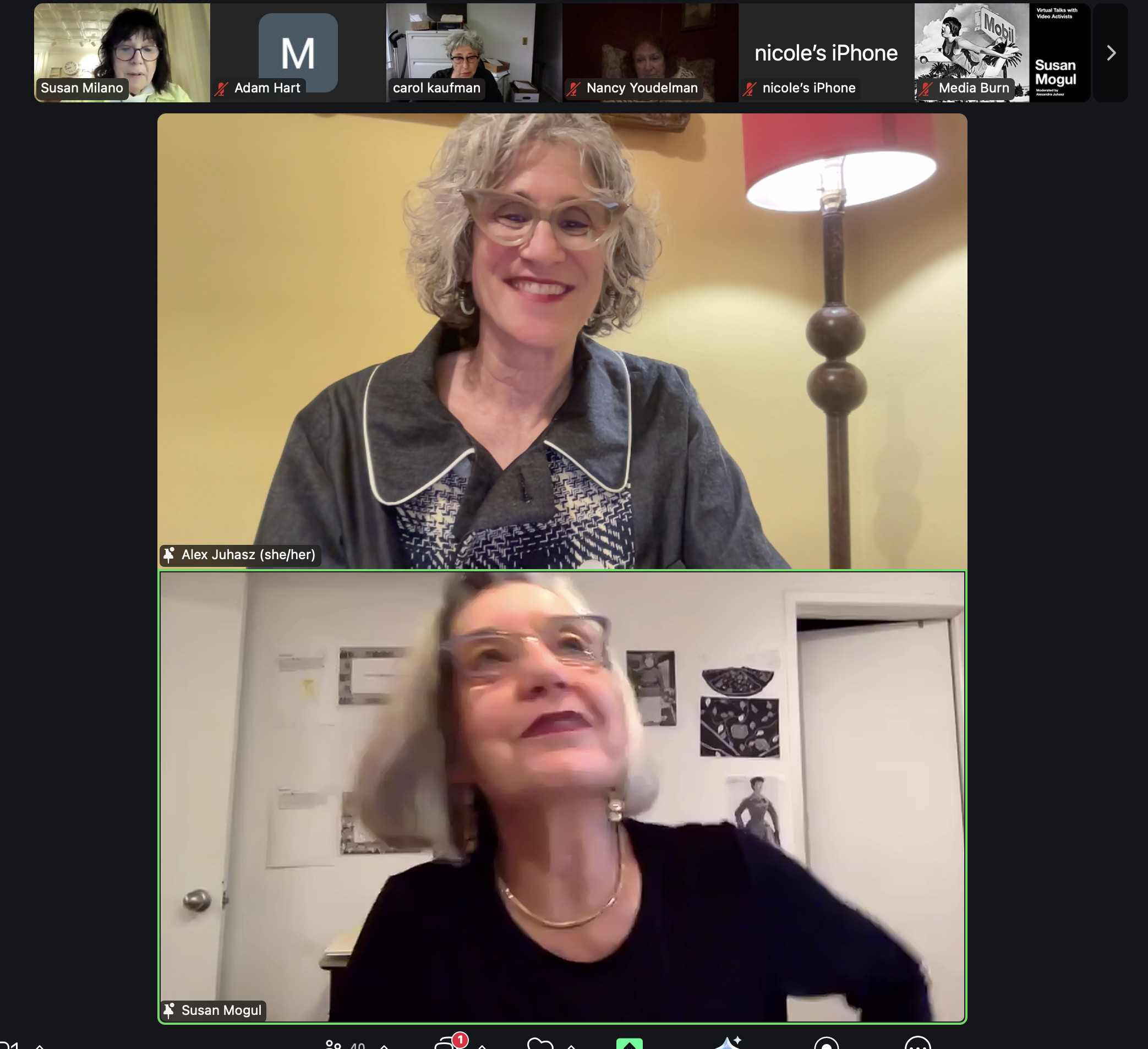


Last night I glided from audience to respondent @ Media Burn Archive‘s Virtual Talks with Video Activists, featuring the LA multimedia artist and social documentarian, Susan Mogul. I’ve been talking with Susan about her work since the early 2000s. I admire her humor, honesty, and commitments to feminist praxis, by which I mean not just what she makes work about, but how she does it: in her own community, about her own experience, using the means available to her (all this we will see evidenced in the event, more on this soon).

Susan is an inveterate professional. She used her short time on screen to share compelling clips from 5 works (Dressing Up, 1973; Take Off, 1974; Mogul is Mobile REDUX, 1975/2022; Sing, O Barren Women, 2000; and Tell me about Your Mother, 2024)1, while also providing the 40 or so people in digital attendance background about how she came to video (at the Feminist Art program at Cal Arts and then at the LA Women’s Building); what equipment has been available to her over her long career in video (first a portapack, then a studio at a medical school, later a camcorder, currently not really working); and how her work has moved to embrace both personal confession and communal expression.
While the entire affair was lovely, two things stand out in relation to my use of this old blog to think in longer form about what to do with ourselves in the interval between election and inauguration: how to feed and be fed, listen and speak, learn and feel; how to weather (and change?) the impending storm.
In our lively conversation after her screening, when I asked Susan if she felt like the “video activist” named in the program’s title, I was not surprised to hear her explain that she had been surprised, too, by that nomenclature. She admitted that she had thought of reaching out to the evening’s hosts to humbly decline such a mantle. But then, she reconsidered. If she was so hailed, so be it. Then, thinking out loud with me and the audience of friends and supporters witnessing, she took more time, and thought, and spoke some more. She expressed that perhaps her overtly feminist, sex-positive career of art beautifully made about the life and labor of the female artist could be “activist” if that word honored activities like organizing and marching, but then included the kinds of living and learning and watching (this is the work of the audience) that might be needed to encourage and instigate overt political action.
Yes. These are words and ways for the interval.
Sitting together for a quick hour on Zoom (the video of the evening will be made available by Media Burn), in a familiar and long-term conversation with me and others who were listening; invited and supported by the small and mighty staff of Media Burn, Adam Hart and Sara Chapman; with an “audience” of her contemporaries from LA’s and US video art and activism scenes, as well as scholars, activists, and video artists who might not know Susan, or be from her generation, but were hailed into audience because of their own commitments to feminism, documentary, video art, archives, or fandom … well, that’s exactly the sort of use of the digital that I am understanding as “audience as community“:
small enough to stay known; built through and about history but alive in this present; dependent on political or artistic commitment; dialogic; and as Susan said about her long career, “outside the mainstream.” Feminist praxis: not just what is made but how it is done, in own own communities, about our own experiences, using the means available, and then REDUX, doing this again, but updated, when we need it.

- You can see a bounty of clips of Susan’s work on her Vimeo page: https://vimeo.com/user15670836. ↩︎
Comments
One response to “activist video @Media Burn Archive”
[…] (03:18): There’s something about your understanding of feminist practice, right? The way something is done matters as much as the thing that is produced. That’s a big […]